MMU - What is it and how does it work?
The MMU is Prusa's version of multi-material printing, hence the MMU name: multi-material unit. It works feeding up to 5 filaments using a selector and changes the way filament is fed in to and out of the extruder. New techniques are used to control the workflow - an interesting change is "ramming": whereby the extruder does a set of moves to make sure that the outgoing filament tip is shaped correctly - sharp. Buckle up, there's plenty to go over.
Theory of Operation
If you are new to the MMU, it is very strongly recommended to watch the video below. It goes into detail on the theory of operation, which could answer many questions that you may have or will have as you work with the unit. Even if you have an idea of how it works, this video will be sure to teach you a number of things. Take it from me. I built one and after watching the video, I wished I had watched it before!
Anatomy
Please reference the pictures below to learn about the MMU components
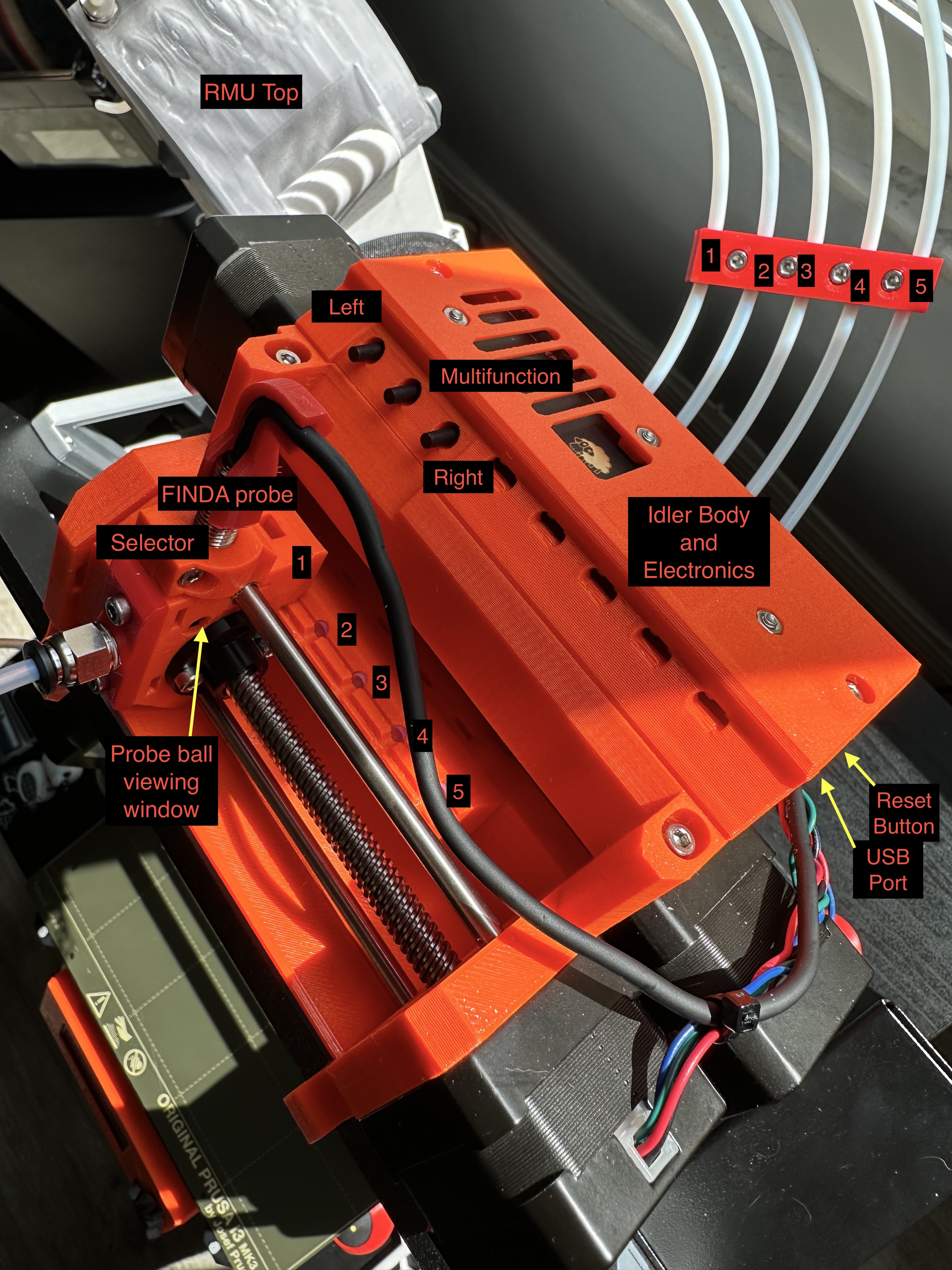
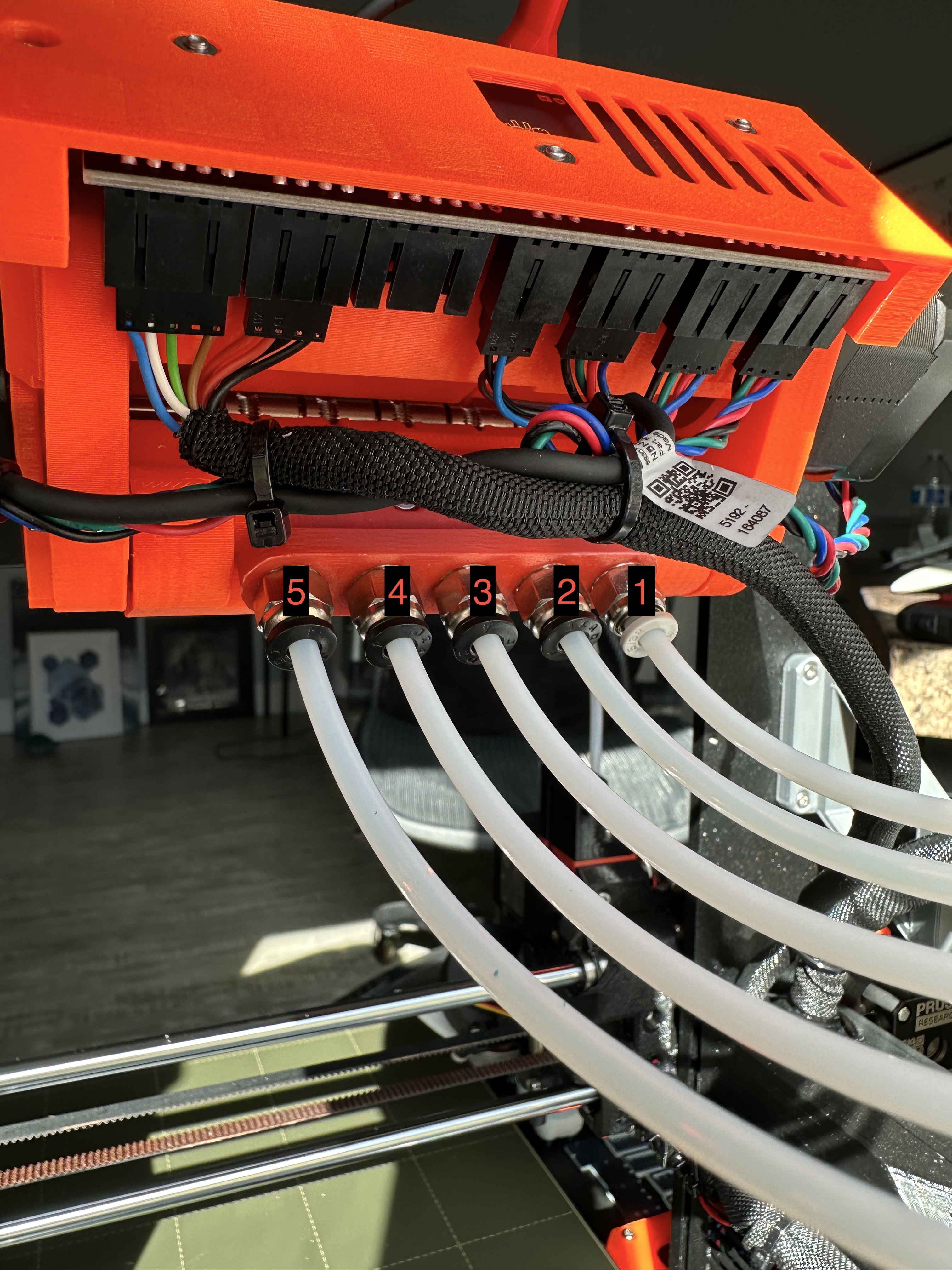
Operation
The MMU can provide hours and hours of reliable operation if and only if the user is consistent with maintenance. This includes what to do in between prints.
It also requires that the operator always pays attention to how much friction there is in the filament path.
Warning
The system is VERY sensitive to friction. If it even succeeds to load in a system with high friction, you will see A LOT of under-extrusion in your prints.
The way to gauge this is during initial filament feeding. As you're loading the RMU and/or MMU, using your hands feel if the filament easily guides through the tubes or if there is anything causing friction or blocking it all together. This should also be checked periodically even when filament is loaded because fine filament strings and particles can travel through the tubes and get stuck, causing issues that come out of nowhere. After all, every toolchange means that the old filament has to be pulled back and the new one fed in, so there's a lot of travel.
In Between Prints
Before starting a print, the entire MMU unit, extruder, buffer should be checked for any debris that can either get caught in crevices (which can cause jams with the selector) or can obstruct the filament path. It is highly recommended to have and use cans of compressed air at all times to perform the following:
- [Extruder] Clean out the extruder by blowing 2-3 puffs of air into the extruder idler gear window
- [MMU] Clean out the MMU selector, idler, and pulleys
- [RMU] Clean out the RMU of any debris
In addition, before starting a print, IT IS CRUCIAL TO CHECK ALL PARTS OF THE MACHINE TO MAKE SURE THERE ARE NO OBSTRUCTIONS. Please see below examples:
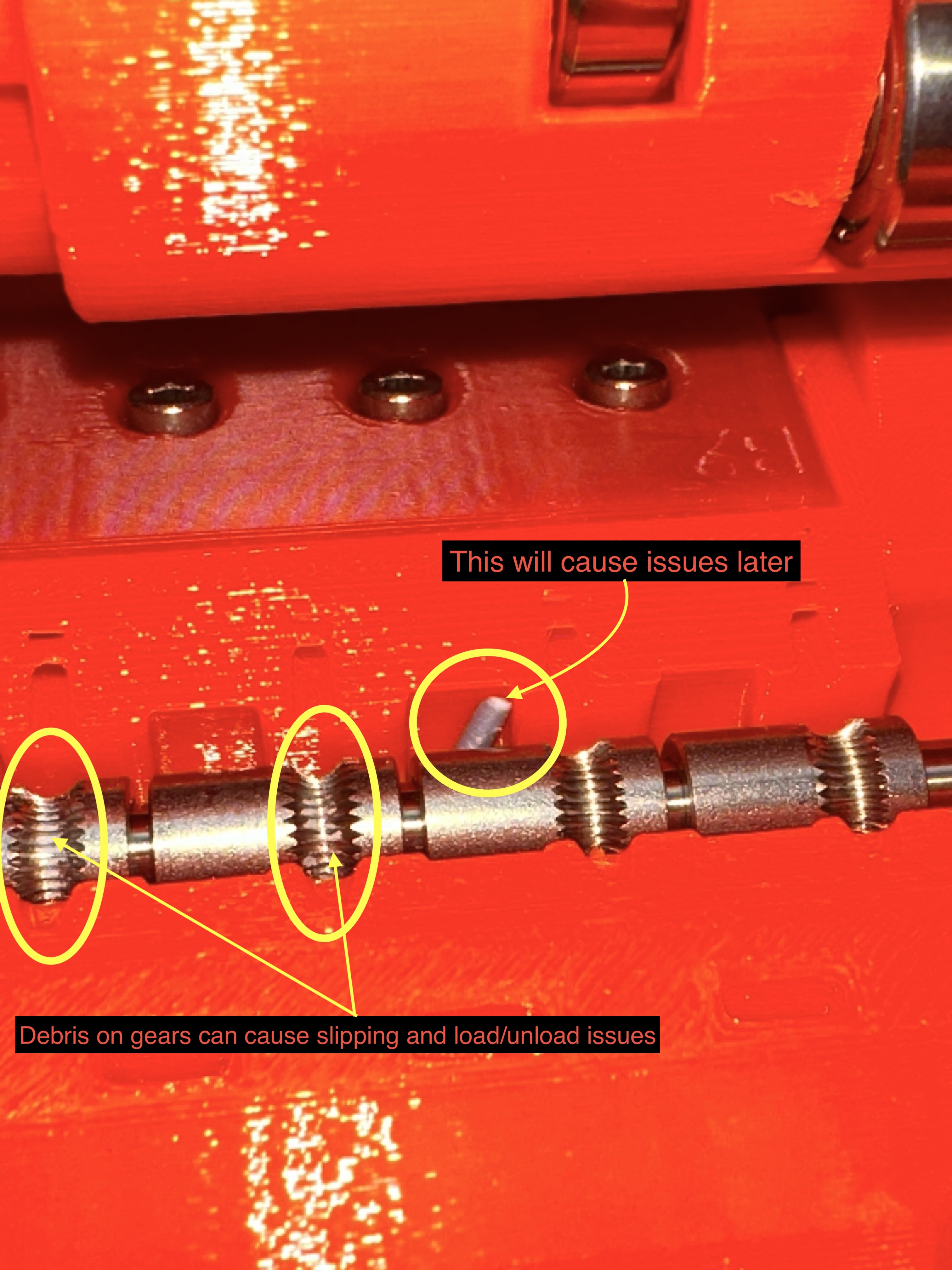

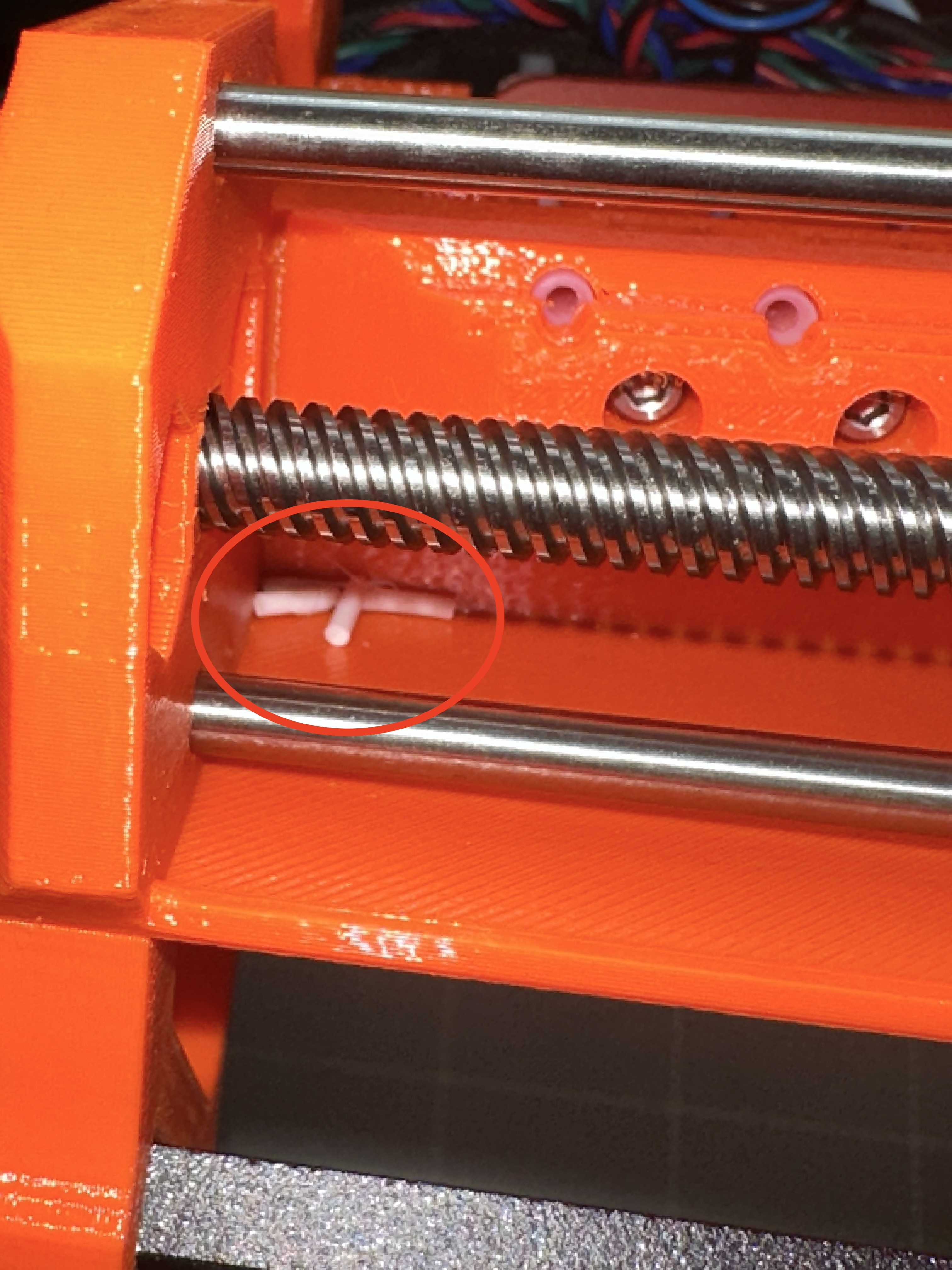
In the last picture, you can see tips of filaments cut by the MMU. These do NOT need to be cleaned between prints, but should be checked and cleaned out periodically and as needed.
I cannot stress enough the following point, so I'll repeat to drive it home:
Danger
AT ALL TIMES, MAKE SURE THE MMU AND EXTRUDER ARE CLEAR OF ANY DEBRIS. Failure to do so WILL lead to failures and frustration.
Loading Filament
There are a couple of considerations to keep in mind when loading filament into the MMU: filament tip and filament "straightness". You want the tip to be sharp and you want the filament to be straight to ensure it goes into each channel correctly.
When cutting the filament tip, use sharp cutters and cut an angle. As you're loading into the MMU, when it reaches the pulley body you may need to "persuade" the filament in to the final channel by using a small screwdriver or similar tool. You may need to open the idler body or move the selector out of the way using the buttons on the MMU in order to get more clearance.
Then, using the printer menu, choose "Load to MMU" and choose the appropriate channel. See the pictures below for more information.
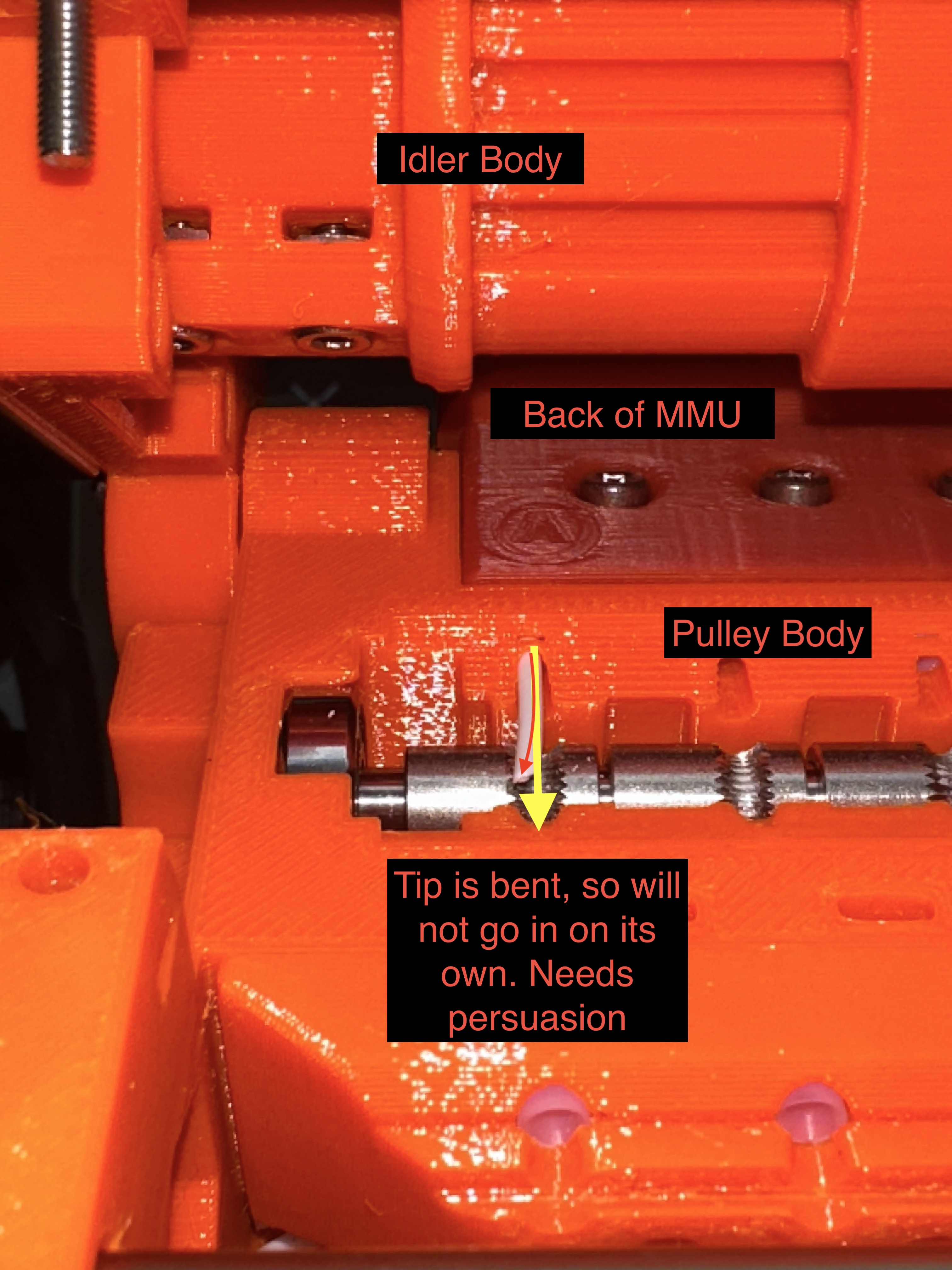
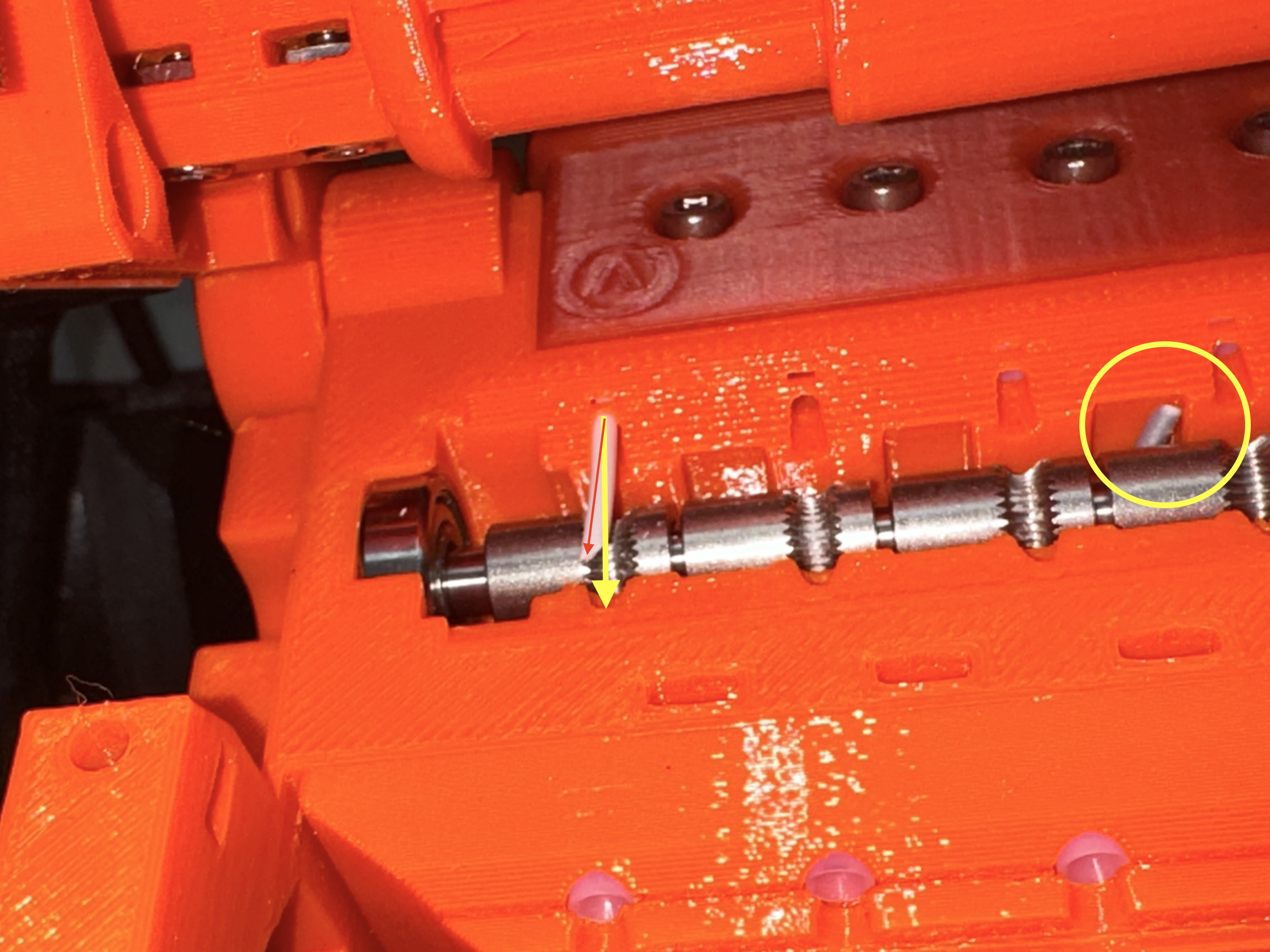
Slicer Settings
Please see below screenshot. Highlighted are the settings that made the difference between baby-sitting a print and knowing that I don't need to stare at the printer for a successful print.
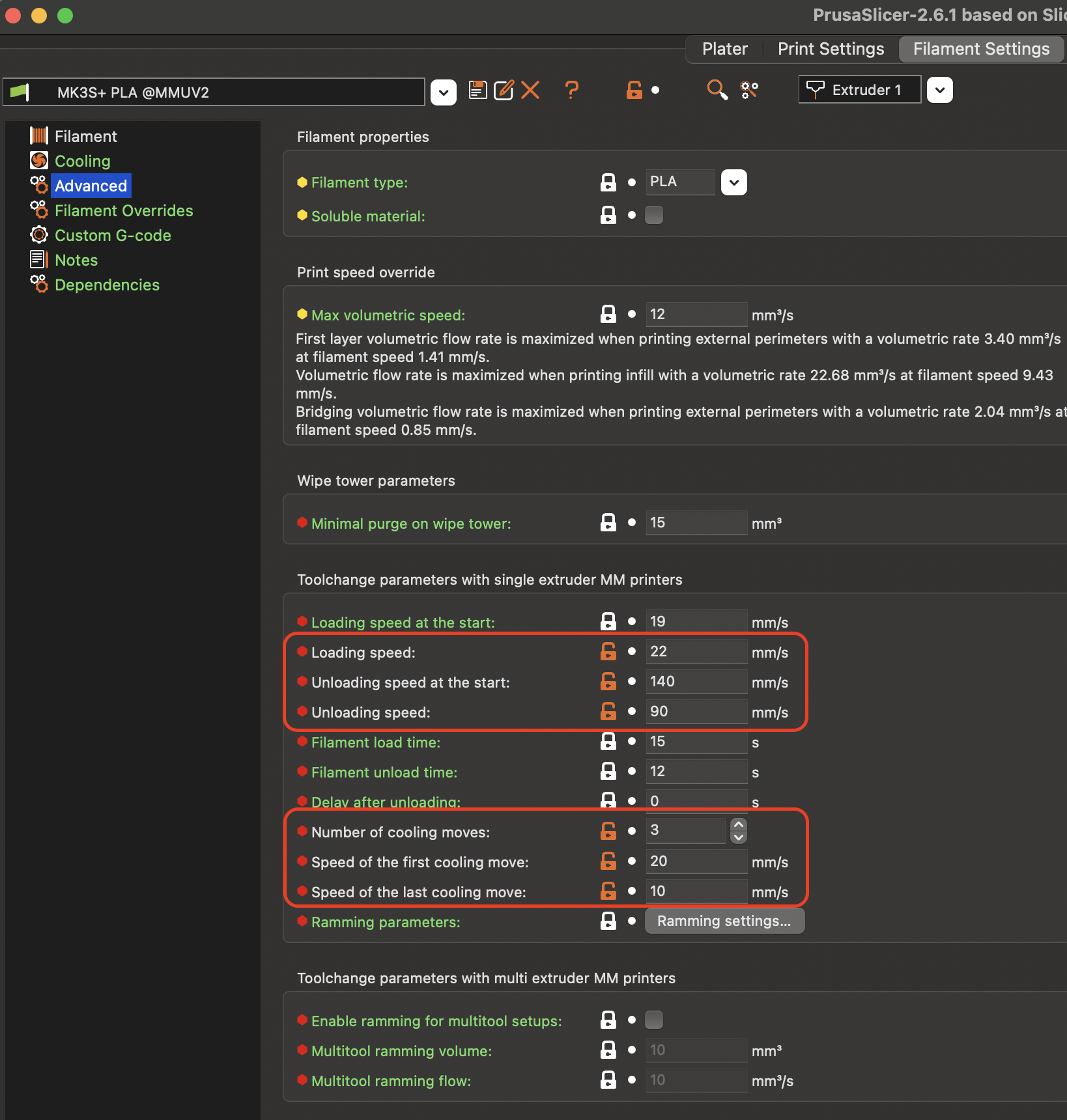
The settings above ensure that both the MMU and extruder work together to "pass the baton filament"
to each other by continuing to feed the filament until both the FINDA probe and the IR
filament sensor confirm that they are triggered.
Below are the config files for the settings I've used to much success. They are INI downloadable files that you can import into your copy:
- PrusaSlicer config file
- PrusaSlicer config bundle without printer
- PrusaSlicer config bundle with physical printer
Spool Placement
Spool placement is important as it ensures tangle-free operation in addition to preventing more friction being introduced into the system. Please refer to the linked article for more information, as Prusa already did an excellent job documenting this.
Still having issues?
If you're still having issues, please refer to the excellent Prusa troubleshooting page here, their guide on troubleshooting MMU jams, and the Prusa forum posts. If you're completely stuck after reading the docs/posts, please reach out for 1:1 support.